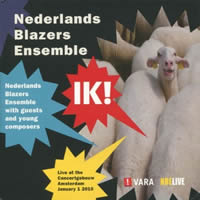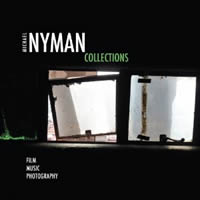Armchair Operas 6.
|
Grant Chu Covell [January 2011.]
Jan SCHMIDT-GARRE: Bruckner’s Decision (“Bruckners Entscheidung”) (1995). Cast includes: Joachim Bauer, Sophie von Kessel, Michael Ponti, Peter von Fontano, Peter Fricke, Markus Ertelthalner, Julia Regehr, Das Waller Trio, Joachim Kaiser. Arthaus Musik 101 369 (1 DVD) (http://arthaus-musik.com/). Distributed in the US by Naxos (http://www.naxos.com/). Eighty sluggish minutes dramatize three months in Bruckner’s life. The insecure 43-year-old spent the summer of 1867 at Bad Kreuzen wrestling with a decision: to leave Linz and seek his fortune in Vienna as a composer, or journey to Mexico. North America appealed because Franz Josef’s brother went there to become Maximilian I, Emperor of Mexico. The director’s motivation is incomprehensible. Insatiable Bruckner adherents or scholars of 19th-century spas might find something worthwhile. We learn that the spa’s cold-water cure involved a strenuous daily regimen including exercise, baths, swimming, showers, having oneself wrapped in layers of wool and damp blankets, massage, and drinking the water. We also discover that Bruckner had a counting disorder and felt compelled to count measures, steeples, pearls in a necklace, stones, etc. Obligatory mass and symphonic excerpts underscore the composer praying, walking and enduring the cure. I suspect that most of what we hear postdates 1867. Appropriate Tristan bits accompany Bruckner’s unrequited love for a spa attendant. Stranger conceits aggravate the drugged pacing. Why no color? The Steinway & Sons instrument improbably suggests that the Bad Kreuzen management was way ahead of its time. The characters never talk. We only hear voice-overs or monologue. Plot details are imparted as another spa visitor’s fiancé reads letters and contemplates replies. Scenes of Bruckner lecturing indicate the outcome of the composer’s decision. As Maximilian I was executed in 1867, Linz was probably the right choice.
“Music for Films.” Olga NEUWIRTH: The Long Rain (2000); Canon of Funny Phases (1992); Durch Luft und Meer (2007); Symphonie Diagonale (2006); The Calligrapher (1991); Miramondo Multiplo (2006-07); Disenchanted Time (2005); No More Secrets, No More Lies (2005). Kairos 0012772KAI (2 DVDs) (http://www.kairos-music.com/). Distributed in the US by Allegro Music (http://www.allegro-music.com/). Don’t break out the popcorn just yet. None of these films is likely to appear at the Cineplex, though most are perfect for dimly lit galleries. Often credited for sound and idea, Neuwirth’s versatility demonstrates prowess; however, this collection soon becomes unenlightening and tiresome. As a huge Brothers Quay fan, I was partial to the diminutive The Calligrapher, a scant minute scored with harpsichord (guitar?). Miramondo Multiplo cleverly animates the composition process. Atmospheric music for trumpet and orchestra swirls while an invisible hand (Neuwirth?) pencils and erases notes on a page. Symphonie Diagonale joins Helmuth Viking Eggeling’s 1924 film, jumpy musique concrète pairing with the constructivist visuals. The other items are wearying. A Ray Bradbury story provides The Long Rain’s narrative: A wandering airplane crew alternates with shots of the musicians playing the score. Eventually the groups cross paths. Sparked by René Clair’s Paris qui dort, montages of sightseeing tourists loop at variable speeds in Disenchanted Time — an indulgent, undeveloped 30 minutes. Durch Luft und Meer dwells upon the sea and snowflakes. Images and sound within Canon of Funny Phases — Neuwirth’s sister Flora provides animation — appear to follow a canonic form. It’s not particularly funny and, at 7:52, felt too long. No More Secrets, No More Lies, with its scrolling poem interrupting an androgyne singing burlesque at a waterline, would try the patience of a saint. Extras include Gefahr Bar from 2006, Neuwirth’s apparently humorous appearance on a German panel, 13 incomprehensible minutes for a non-German speaker.
Werner HERZOG: Gesualdo: Death for Five Voices (1995). Cast includes: Pasquale D’Onofrio, Salvatore Catorano, Angelo Carrabs, Milva, Angelo Michele Torriello, Raffaele Virocolo, Vincenzo Giusto, Giovanni Iudica, Walter Beloch, Principe D’Avalos, Antonio Massa; Il Complesso Barocco, Alan Curtis (cond.), Gesualdo Consort of London, Gerald Place (cond.). Arthaus Musik 102 055 (1 DVD) (http://arthaus-musik.com/). Distributed in the US by Naxos (http://www.naxos.com/). Structured like a documentary, Gesualdo retells and invents sensational stories about the illustrious Don. The fanciful hour includes musical interludes from Il Complesso Barocco and the Gesualdo Consort of London. We meet cooks reviewing Gesualdo’s lavish wedding menu and the current Prince D’Avalos, who penned an opera about his murdered ancestor. We see what might be the Prince of Venosa’s castle, now crumbling. Its visitors include a compassionate bagpiper who serenades the walls to appease Gesualdo’s ghost and a woman claiming to be the reincarnation of his murdered wife darting through the ruins with a boom box. Does Herzog genuinely share our fascination with the Count’s chromatic music, or is he taking E! back to the 16th century?
“IK!” Var. comps. Nederlands Blazers Ensemble, et al. NBE Live NBECD025 (1 CD, 1 DVD) (http://www.nbe.nl). Distributed in the US by Allegro Music (http://www.allegro-music.com/). The Netherlands Wind Ensemble’s New Year’s Day concerts appear to have a following. This CD / DVD pair documents their 2010 Concertgebouw event. IK! might be best rendered as “I!” The 94-minute DVD extends the 76:45 CD with emcee introductions and stitching that make no sense to non-native speakers (the DVD offers no subtitles). The visuals explain the high spirits: colorful outfits, popping balloons, an Elvis impersonator, sight-gags of performers tossing their predecessors off the stage, dueling bassists rising on platforms, a caged performer in Bittová’s Strange Young Lady, and so on. During the opening number, a Purcell chorus (Hush, no more noise), the ensemble clothed in sheep outfits crawls onto the stage. This explains the unsteady tempo of the following selection (Nyman’s An Eye for Optical Theory): They’re finding their way to their stage positions. Some selections are reprised from earlier recordings (Bittová, Liszt), with content that was new to me: Handel’s È ben folle quel nocchier from Il Trionfo del Tempo e del Disinganno in a vivacious arrangement for trombone and winds (including cimbalom). As is their tradition, the NBE New Year’s concert contains genre-straddling guests: in 2010, Staff Benda Bilili from Congo-Kinshasa, and Marjan Vahdat from Iran. There are also four pieces featuring young composers / performers (Baue Kunstman, Annemiek de Bruin, Chardonnay Martes, Guus van Wolde). The concert closes as it began with the same a capella chorus — these wind players sing well, too — and the sheep exit the hall. I wonder if Rzewski’s Les Moutons de Panurge is in their repertoire.
“Collections.” Michael NYMAN: 50000 Photos Can’t Be Wrong (2010); Cine Opera (2010); “Portrait of a Label” (compilation, 2010). MN Records MNRCD204 (1 CD, 1 DVD, 1 book) (http://www.mnrecords.com/). Distributed in the US by Naxos (http://www.naxos.com/). From Nyman’s home label comes a three-part sampler. A CD, “Portrait of a Label,” strings together excerpts from each existing MN Records release. Cine Opera is an attractive jewel-box sized book with Nyman’s bittersweet photos of an abandoned movie theater in Mexico City. If you don’t know Nyman as photographer, here’s an introduction. 50000 Photos Can’t Be Wrong is a DVD with nine short films, photo arrangements and videos rolling over Nyman scores. I suspect that music and images came together late in life. Several of these thumbnail sketches are fanciful and, thankfully, most are two minutes or less. I did wonder about Nyman’s intentions: Is “Beach Fatties” meant to be funny or crass?
Arnold SCHOENBERG: Verklärte Nacht, Op. 4 (1899); Chamber Symphony No. 1, Op. 9 (1906). The Smithsonian Chamber Players, Kenneth Slowik (cond.). Dorian DSL-90909 (1 CD, 1 DVD) (http://www.dorian.com/). Distributed in the US by Naxos (http://www.naxos.com/). “Schoenberg invented us,” aptly remarks Reinbert de Leeuw while discussing the First Chamber Symphony during one of the DVD’s illustrated lectures. (Is there anyone who doesn’t think Schoenberg is pivotally important to 20th-century music?) In addition to two fine recordings, Dorian ladles up detailed and thoughtful programs about Schoenberg’s most performed works, Verklärte Nacht and Chamber Symphony No. 1. I’m not biased simply because my college composition professor, Richard Hoffmann, Schoenberg’s amanuensis, appears. Of course not! We see analyses, historical materials, tours of Vienna’s recently established Arnold Schönberg Center, etc. Others involved include Anner Bylsma, René Clemencic, Christian Meyer, and Kenneth Slowik doing double-duty as conductor and narrator. The soft-focus filming for Verklärte Nacht may overreach, but that’s what the audio-only CD is for.
[Previous Article:
Pianos Abused: Schubert and Beethoven in New York]
[Next Article:
Eights and Nines]
|





